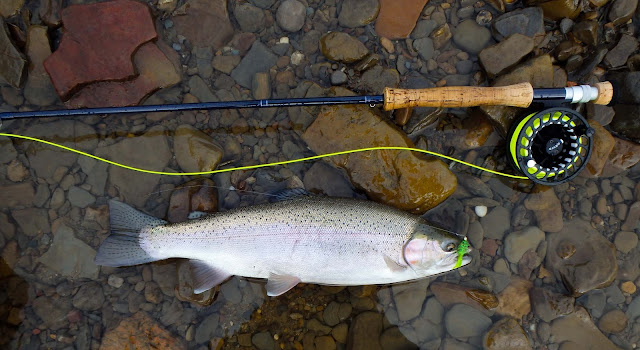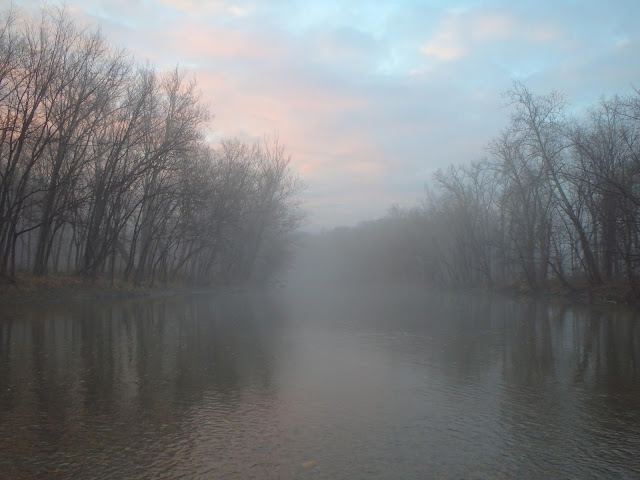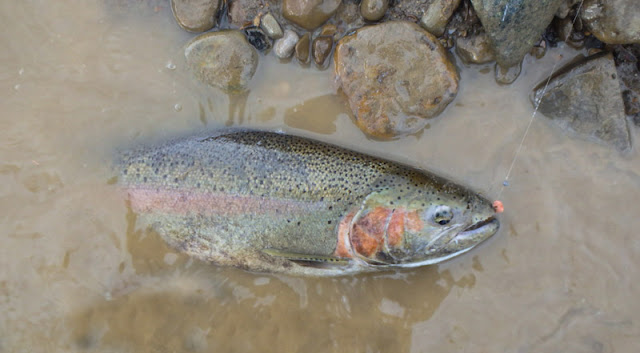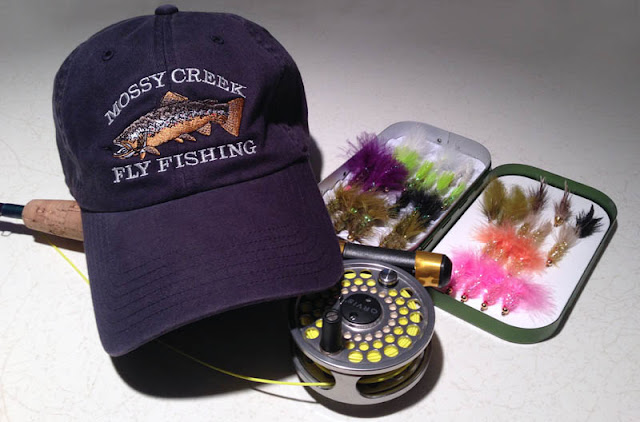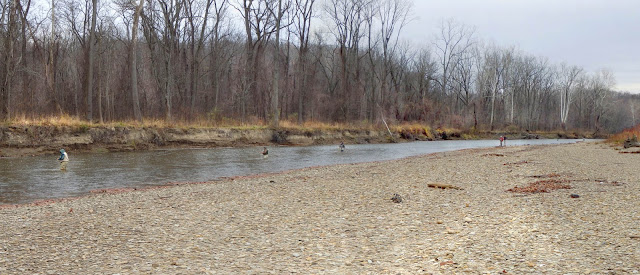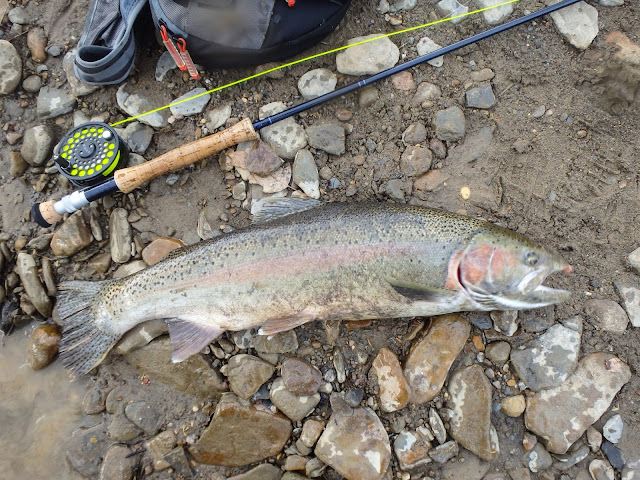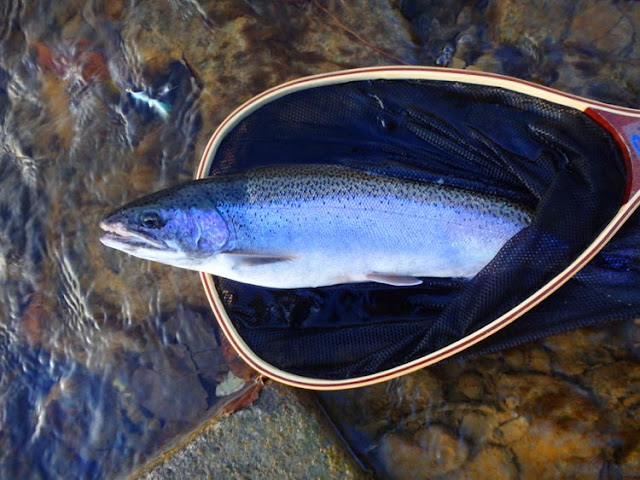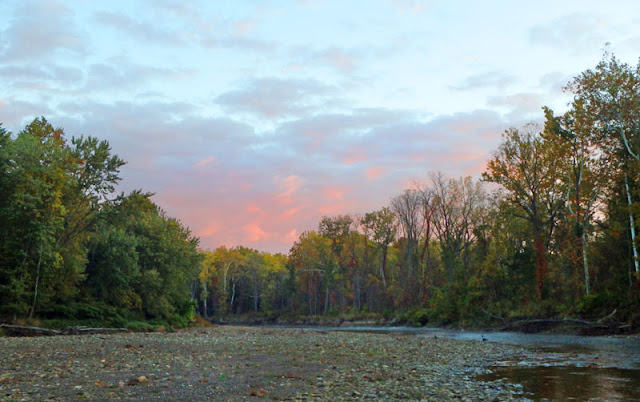So, what does golf and fly fishing in common? First of all, this is not a trick question. Actually, the golf swing and putting stroke have a lot in common with fly fishing, and the casting stroke in particular. Having golfed for over 40 years I understood the commonalities rather quickly when I first picked up a fly rod five years ago. Funny thing is, what I do wrong in the golf swing I do wrong in the casting stroke. Let’s take a look at a few things that can help the golfer and the fly fisherman.
Golf Clubs and Fly Rods
Both a golf club and a fly rod flex. This flexing is important as it stores and transmits power. The golf swing is designed to load the shaft of the golf club. If the shaft isn’t properly loaded, power cannot be transmitted to the golf ball. I can say from experience that when I play with golf clubs that do not have regular shafts I cannot hit the ball my usual distance. That’s because my swing speed isn’t fast enough to flex, or load a shaft that is stronger than regular.
In a way, the same thing can be said for the fly rod. The casting stroke is designed to flex, or load the fly rod. If it isn’t properly loaded, power cannot be transmitted to the fly line and the cast will go nowhere.
The Golf Swing and The Casting Stroke
To properly load the golf club and the fly rod, the golfer and fisherman must go through a range of motion. In golf this motion is the swing, in fly fishing it is the casting stroke. If the swing and the casting stroke are done correctly the end result will be a good shot and a good cast. Done incorrectly, the golf ball will go off line and the fly line will not straighten out as it should.
When thinking about my golf swing and casting stroke I laugh because I have the same fault in both. The golf swing should never be rushed, and the transition from backswing to forward swing should be smooth with a gradual increase in speed. Instead, I finish the backswing and then in an attempt to hit the ball as far as possible swing too fast at the beginning of the forward swing. Not only will this result in a poor shot it also does not properly load the shaft. By the time the club reaches the ball a lot of the energy in the swing is gone. I commit the same fault during the casting stroke. All instruction for the casting stroke discusses the need for gradual acceleration to an abrupt stop. This motion will transmit power to the fly line sending it behind you on the back cast and out toward the target on the forward cast. As you can probably guess I often apply the power too quickly resulting in a poor cast.
The Putting Stroke and The Casting Stroke
To me there are a few parts of the putting stroke that a fly fisherman can relate to the casting stroke. The first element is the mechanics of the putting stroke, how the putter is held and swung. Putting strokes are unique to each golfer but there are certain aspects that all golfers share. The putting stroke is performed with a gradual acceleration by moving the shoulders, arms, and hands in one piece. During this movement two things can go wrong. First, some golfers, while putting, will break their wrists, resulting in a putt that is off line. Secondly, instead of accelerating the putting stroke the golfer will decelerate the putter resulting in another poor putt.
This putting stroke is flawed as the left wrist has broken down. It should be relatively straight.
Now, in fly fishing, for a cast of about 40’ or less the wrist, on the backcast, should be relatively straight and not bent. If the wrist breaks, the line will not straighten out properly, resulting in a poor cast.On the forward cast a slight wrist snap at the end of the stroke is acceptable, and some say required. It’s the “flick the paint brush” action that finishes a good cast. The photo below illustrates what happens when the wrist breaks down and the fly rod is almost horizontal. In this position the line will likely hit the water or a bush behind the caster.
In this position the fly line will most likely hit the water or a bush behind the caster.
The fly rod should be closer to vertical.
As for deceleration in the casting stroke, the line will not straighten out, but will land on the water in a pile. Remember, a properly executed cast will have gradual acceleration to an abrupt stop.
The last comparison to make between the putting stroke and the casting stroke is distance control. Part of putting is learning how hard to hit the ball for it to travel a certain distance. This can only be learned by practice and playing. On a level green to hit a putt 3’ may only take a putting stroke of a few inches. To hit a putt 30’ it may take a stroke of about 18”. Again, this has to be learned. Golfers who are good putters have good feel or touch. They have the ability to hit a putt consistently the correct distance.
As for the casting stroke, fly fishermen who are accurate casters, have learned how long the stroke will be for a given distance. A 15’ cast will take a short range of motion while a 40’ cast will take a much longer range of motion.
Hopefully, this basic information can be used for the golfer who may want to take up fly fishing or for the fly fisherman who wants to learn how to golf. Having common reference points to the motions involved may be able to speed up the learning process.
Go out and fool a fish!

